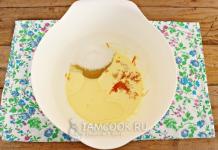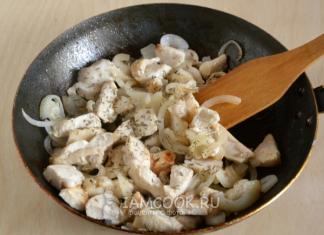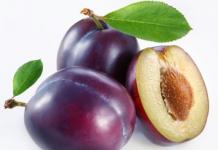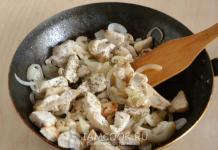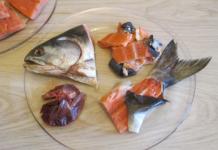This flower has been known to people for a very long time. Images of the iris were found in Crete among the paintings of the Knossos Palace, built at the end of the 3rd millennium BC.

For its variegated flowers of all colors of the rainbow, this plant is named after the Greek goddess Iris, who descended to earth to announce to people the will of the gods. And the name “iris,” which means “rainbow” in Greek, was given to the plant by the physician and naturalist Hippocrates.

The iris also appeared on the coat of arms of the city of Florence. The Romans named the city, surrounded by white iris plantations, Florence, which means “blooming.”

In Japan, iris protected homes from harmful influences. In any Japanese family with sons, on the traditional Boys' Day (the fifth day of the fifth moon), a magical talisman ("May pearl") is prepared from iris and orange flowers on this day, since in Japanese the same hieroglyphs indicate the names of iris and the words "warrior spirit". “May pearls,” according to legend, should instill courage in the soul of a young man: even the leaves of the plant are very similar to swords.

For Christians, the iris symbolizes purity and protection, but it also became a symbol of sorrow and pain, the reason for which was its sharp wedge-shaped leaves, which seemed to personify the suffering and sadness of the Mother of God’s heart from the suffering of Christ. The blue iris is especially common as such a symbol in images of the Virgin. The iris can also symbolize the virgin birth.

As a religious symbol, the iris first appears in the paintings of the early Flemish masters, and in images of the Virgin Mary it is present both with and instead of the lily. This symbolic meaning is due to the fact that the name “iris” means “lily with a sword,” which is seen as an allusion to Mary’s grief for Christ.

The Legend of the Iris
A miracle flower bloomed at one edge of the forest. Forest animals and birds began to argue about who it belonged to. They argued for four days, and the dispute resolved itself. The iris seeds ripened, and the wind carried them in different directions.

According to legend, the first iris blossomed several million years ago and was so beautiful that not only animals, birds and insects came to admire it, but also water and wind, which then spread the ripened seeds throughout the earth. And when the seeds sprouted and blossomed, the iris became one of man’s favorite plants. From a distance, irises seem like small beacons showing the way to sailors.

Florence was called Florence by the Romans only because irises grew in abundance around this Etruscan settlement, and the literal translation from Latin into Russian “Florence” means “blooming”. Since then, the Florentine iris has graced the city coat of arms of Florence.

This type of iris has also become famous for the fact that for a long time they learned to extract fragrant essential oil with the aroma of violets from its rhizome. That is why the rhizome of this iris is called orris root. This natural fragrance was used in royal dressing rooms as early as the 15th century. From 1 kg of rhizomes, an average of 7 g of essential oil is obtained, which is used in perfumery. Fragrant substances are also extracted from flowers.

The flower received its name from the hands of the famous healer Hippocrates, who named the plant in honor of the ancient Greek goddess Iris, who proclaimed the will of the Olympian gods to people. The goddess Iris descended along a rainbow to the earth, which is why the word “Iris” translated from Greek means rainbow. Carl Linnaeus, who proposed a unified system of scientific names for plants, retained its ancient name for the iris.

And here is another legend about irises. One day, the rainbow fell into pieces before disappearing. Wonderful fragments of the rainbow fell to the ground and charming flowers sprouted. The rainbow crumbled into small fragments - and the irises bloomed. They sprouted, according to Pomeranian legend, from the tears of a fisherman who often mourned separation from her husband.

Another legend tells. When the titan Prometheus stole the heavenly fire on Olympus and gave it to people, a wondrous seven-colored rainbow flashed on earth - so great was the joy of all living things in the world. The sunset had already faded, and the day had faded, and the sun had gone, but the rainbow still shone over the world, giving people hope. It didn't go out until dawn. And when in the morning the sun returned to its place again, where the magical rainbow burned and shimmered with colors, irises bloomed...

Iris flowers have been known to man since ancient times. On the island of Crete, a fresco that was located on the wall of the Knossos Palace depicts a priest surrounded by blooming irises. This fresco is about 4000 years old. Iris flowers are imprinted in the stone of Oriental and Roman galleries and balustrades. In the Middle Ages, they grew in the gardens of castles and monasteries, from where they were transferred to the gardens of townspeople. Even in ancient times, Arabs planted wild iris with white flowers on graves. And in Ancient Egypt it was bred back in the 16th-15th centuries BC, and it was a symbol of eloquence there. In Arabia, on the contrary, they were a symbol of silence and sadness.

In Russia, the word "Iris" appeared as a botanical name for plants in the second half of the 19th century, and before this period they used the popular name "Iris", the inhabitants of Ukraine called irises "Cockerel". In Bulgaria, Serbia and Croatia, the iris is called Perunika - in honor of the Slavic god Perun.

The Slavic peoples widely used a rainbow range of colors and shades and bizarre forms of iris inflorescences. They could be seen in folk crafts, in the textile industry, as well as in decorating everyday life: painting homes, utensils, clothes (in the ornament of shirts, sundresses, towels, shawls and half-shawls).

In Japanese, "iris" and "warrior spirit" are represented by the same character. On May 5, Boys' Day, all the people perform hanami - ritual admiration of flowers in iris gardens, where they grow immersed in water and on this day images of irises appear on all household items. On the traditional holiday of boys, a magical talisman is prepared from iris flowers, which should instill courage in the soul of the young man. Iris leaves look like swords, and the Japanese are deeply convinced that they should awaken strength, courage and courage in a future man. Once upon a time, on Hanami Day, the Japanese prepared a drink called May pearls from iris and orange flowers. Those who used it were healed from many diseases.







Family: iris (Iridaceae).
Homeland: Europe, Asia, North America, North Africa.
Form: perennial rhizomatous plants.
Description
Iris (irris) is a perennial herbaceous rhizomatous plant. However, there is a popular misconception that irises are bulbous. The leaves of the iris (irris) are sword-shaped, flat, thin, with a waxy coating, most often collected in a fan-shaped bunch. The roots of irises are thread-like, fibrous, and improve the structure of the soil.
The flowers of the iris (irris) are solitary or in few-flowered inflorescences, fragrant in some species, distinguished by an elegant shape and a rich range of various shades, from pure white, yellow, blue to purple and almost black. The iris flower (iris) is large, consists of six (sometimes three) petal-shaped perianth lobes. The outer and inner lobes of the iris flower differ in shape, size and color. Garden irises (hybrid irises) and some others have multicellular hairs on their outer lobes - a “beard”. Iris (iris) blooms from May to June. Iris flowers bloom from one to five days.
Iris fruits are triangular ribbed long capsules. Iris seeds are large, ribbed, light or dark brown, 25-45 pcs. in a seed pod.
The varieties of irises are so diverse that you can easily create an entire iris garden.
The most common types of irises:
Bearded iris (I. barbata). It got its name because of the outer petals, the bases of which are decorated with stripes of hairs, often standing out in contrasting color against the general background of the flower. Bearded irises are divided into three groups according to the height of the peduncle: low-growing, no more than 40 cm high; medium-sized, 41-70 cm high; tall, more than 70 cm high. The color of bearded iris flowers varies depending on the variety - blue, purple, bordered.
(I. ruthenia Ker-Gawler). Grows in low, dense clumps. The flowers of the Russian iris are not large, pale lilac and violet-lilac, fragrant. Russian irises are suitable for rocky areas.
, Siberian iris (I. sibirica). Height is about 1 m. Flowers are violet-blue. Siberian iris is very hardy. The leaves of the Siberian iris are narrow-linear, light green, and remain until frost. Siberian iris and varieties of irises bred on its basis are combined into section Limniris. Irises of this group do not have beards on the outer perianth lobes.
 Marsh iris, marsh iris (false calamus, yellow iris)
(I. pseudacorus). Can reach 1 m in height. The flowers are golden yellow with brown streaks and bloom in May-June. Swamp iris (yellow killer whale) is thermophilic, prefers sun or partial shade. Swamp iris (yellow) is winter-hardy; spreads very quickly. Swamp iris (yellow) is used to decorate ponds (water depth up to 40 cm). Tolerates salinity.
Marsh iris, marsh iris (false calamus, yellow iris)
(I. pseudacorus). Can reach 1 m in height. The flowers are golden yellow with brown streaks and bloom in May-June. Swamp iris (yellow killer whale) is thermophilic, prefers sun or partial shade. Swamp iris (yellow) is winter-hardy; spreads very quickly. Swamp iris (yellow) is used to decorate ponds (water depth up to 40 cm). Tolerates salinity.
Iris smooth (I. laevigata Fisch). Needs strong hydration. Smooth iris (smooth iris). Grows near water bodies.
Iris germanica (I. germanica) - iris with wide or narrow sword-shaped leaves that persist until autumn. The flowers of the German iris are large, on long (60-90 cm) peduncles. Flowering from May to late June. German iris (German iris) makes a good cut flower.
(I. pumila) is a miniature iris native to Southern Europe. Height up to 10 cm. Dwarf iris (dwarf iris), growing, forms small curtains. Blooms in May. The flowers are small and can have a variety of colors.
Iris ensiform , or Kaempfer's iris (I. ensata) is the most late-flowering species of irises. The leaves are narrow, 30-40cm high. The flowers of the xiphoid iris are flat with short inner and wide outer petals. The height of the peduncles is 60-70 cm.
Iris bristles (I. setosa). Very frost-resistant species. Recommended even for the far north.
Iris low , or iris low (I. humilis) - low-growing iris height 15-20 cm. Flowers yellow or purple. Low iris blooms in May-June.
Iris ostrogodny
(I. acutiloba). The flowers are yellowish-white, black-brown, with a brown network of veins, strokes and dots. 
Japanese iris (I. japonica). Based on the size of the flower, Japanese irises are divided into small, medium, large and very large. Based on the shape of the flower, they are divided into simple, double, and double. According to the height of the stem - very short, short, medium, tall. By flowering time - very early, early, mid-blooming, late, very late. Japanese iris flowers are purple-violet, in different shades. Reach large sizes. Weakly winter-resistant.
Growing conditions
The iris plant prefers fertile soil. Most irises do not tolerate excess moisture and shading. Large doses of nitrogen cause plant diseases. Irises will grow best on loamy soil with a neutral or slightly acidic reaction (p-H 5-6).
Application
Since irises are very decorative, their use is wide. Irises are often planted near the shores of water bodies. They are also used to create monobeds - iris gardens. Dwarf iris and Russian iris are planted on, in. Irises look very beautiful in combination with lupins, poppies, peons, bristly phlox, sedum and saxifrage, as well as bulbous plants. However, it must be taken into account that irises are not very competitive; well-growing perennials easily suppress them. Contrasting color combinations of irises are good, for example, it is better to plant dark irises against a background of light flowers.
Irises produce a sustainable cut.
Planting and care
 Before planting irises, the soil should be dug to a depth of at least 20 cm, humus, potassium, phosphorus and nitrogen should be added. Fresh manure can be applied only a year before planting irises.
Before planting irises, the soil should be dug to a depth of at least 20 cm, humus, potassium, phosphorus and nitrogen should be added. Fresh manure can be applied only a year before planting irises.
The most favorable time for planting irises in central Russia is the end of August - beginning of September.
Caring for irises after transplantation consists of weeding, loosening the soil, fertilizing and watering.
Irises must be replanted periodically, otherwise individual parts of the rhizomes will be squeezed out to the surface, which will reduce the feeding area and the irises may stop blooming, the leaves will become small and the decorativeness will decrease. Therefore, irises are replanted every 3-5 years - garden irises and leafless iris, 6-8 years - Siberian iris, 8-10 years - yellow iris.
Some irises are covered for the winter.
Reproduction
Irises can be propagated by seeds and vegetatively. The seed method of propagating irises is used only through hybridization, so iris seeds are difficult to find. Irises bloom when propagated by seed for 2-3 years.
Vegetative propagation of irises has become more widespread - this is a simpler method that allows you to get flower stalks in the first year after planting. This is how both varietal irises and wild ones are propagated.
 Iris divisions are planted shallowly, superficially, slightly inclined, so that the bud is at soil level and the upper part of the rhizome is not covered with soil. If the rhizomes are too deep during planting, the irises may not bloom, and there is also a risk of disease or death of the plant. Iris is divided and replanted 2-4 weeks after flowering. Irises bloom luxuriantly in the third year after planting. Iris seeds can be purchased at garden centers, or ordered by mail or online.
Iris divisions are planted shallowly, superficially, slightly inclined, so that the bud is at soil level and the upper part of the rhizome is not covered with soil. If the rhizomes are too deep during planting, the irises may not bloom, and there is also a risk of disease or death of the plant. Iris is divided and replanted 2-4 weeks after flowering. Irises bloom luxuriantly in the third year after planting. Iris seeds can be purchased at garden centers, or ordered by mail or online.
Diseases and pests
The most dangerous diseases of irises include wet root rot, caused by bacteria. The first symptoms of this disease are yellowing and drying of iris leaves in late spring. Then the disease affects the young shoots of irises, they grow weakly, turn yellow, turn brown and die.
Popular varieties
Garden varieties of irises are classified according to shape, size, flower color, height and flowering time. The most common is the division of iris varieties according to the height of the peduncle.
Low-growing irises are divided into two classes:
miniature dwarf bearded irises (peduncle height up to 25 cm);
standard dwarf (peduncle height 25-37 cm).
Medium-sized irises are divided into three classes:
early blooming irises (peduncle height 37-70 cm, flower diameter 7-12 mm);
miniature bearded irises (peduncle height 37-70 cm, flower diameter 5-7 mm);
border irises (peduncle height 37-70 cm, late flowering, flower diameter 7-12 mm).
All varieties of irises with a peduncle height above 70 cm and unlimited flower sizes are classified as standard tall bearded irises.
For cultivation in central Russia, the following varieties of irises of the Limniris group are recommended:
- white irises - 'Snowcrest',‘White Suprl’;
- blue-violet irises - ‘Tikkun’, 'Caesar', 'Emperor';
- blue irises - 'Cambridge', 'Mountain Lake'.
'New Snow'- white iris with a yellow beard, large, fragrant, late flowering.
'May Hall'. Single-color, soft pink, large-flowered, fragrant, medium height.
‘Winner’s Sack’. A single-colored iris of dark purple color with a white spot under a blue beard. Blooms profusely every year.
'Irish Dream'. A single-color, light lemon-yellow variety with a bright yellow beard.
'Merion Made'. Single color light blue with a slightly purple tint with a yellow beard. Very large flowers. Looks beautiful in the garden and in a bouquet.
Irises - general information, classification
General information
Iris (family Iris). In common parlance, killer whale, cockerel. It grows naturally in Europe, Asia, North America and on the Mediterranean coast of North Africa. In total, up to 250 species of iris have been described. In our country, it is distributed in the Central Asian republics, Transcaucasia, the Caucasus, Moldova, Siberia, Ukraine, Belarus, the Non-Black Earth zone of the Russian Federation and other zones, where there are up to 60 wild species.

Some representatives of the iris genus have adapted to growing in damp places along river banks and in low places, others - on dry calcareous slopes and even in saline areas. The wide range of the genus indicates the great ecological plasticity of this plant. For example, Russian iris grows successfully under natural conditions in Siberia, the Carpathians, and Central Asia.
Iris is a fairly well-wintering perennial polycarpic herbaceous monocot with broadly or narrowly xiphoid linear vaginal basal leaves located in fan-shaped bunches at the top of growing vegetative shoots. The leaves are arranged alternately in one plane and pressed tightly against one another. Depending on the varietal and biological characteristics and age of the plant, the fan-shaped bunch consists of 6–10 leaves, with the exception of more than 12.
Depending on the type of iris leaf length varies significantly:
- in short forms from 5 to 10 cm
- in powerfully developed species, leaves reach a length of 2 m
- in cultivated varieties belonging to the garden iris, the length of the leaf blade reaches 6–110 cm with a width of 2.5–6 cm.
The color of the leaves at the beginning of the growing season is light green; by the flowering period, when a waxy coating appears, it becomes dark green with a bluish tint. The leaves are tough, with rough parallel nerves and a large amount of sclerenchyma tissue, which contributes to their strength.
Some types of iris, such as the Siberian iris, are quite shade-tolerant and can grow successfully and bloom regularly in shaded areas. Cultivated varieties of garden hybrid iris are demanding on lighting. They can grow satisfactorily in shaded areas, but abundant annual flowering usually occurs when planted in open sunny areas. In the southern regions of our country, when there is plenty of sun, light shading of plants is sometimes useful.
Classification of irises
In gardening practice, a simplified classification is usually used, which often does not take into account the degree of genetic relatedness between plants. Abroad, it is widely accepted to divide irises into 13 or 17 groups.
Without violating the general principle, iris growers in our country proposed dividing garden irises into 10 groups:
- bearded,
- Aril and Arilbreds,
- Louisiana,
- Pacific coast irises,
- Siberian,
- spuria,
- Hana-shobu, or Japanese,
- Evansia,
- remontant,
- little known.
Modern varieties used in cultivation with a complex genetic nature, originating from both intervarietal and interspecific crossings and belonging to the bearded group, are united under the name German iris, or garden hybrid iris. According to the height of the peduncle, all varieties are divided into low-growing - up to 40 cm, medium-growing - from 40 to 70 cm and tall - over 70 cm; according to the size of the flowers - small-flowered (width within the bend of the outer lobes 6-8 cm), medium - perianth width from 8 to 10 cm, large-flowered - over 10 cm; according to the color of the perianth lobes - into one-color, two-color and plicate.
The iris rhizome is the vegetative underground stem of the plant. It has a stem growing point and cambial cells. Scales (modified leaves) are formed at the nodes of the rhizome. In the axils of the scales, vegetative buds are laid and formed, giving rise to new underground thickened shoots. The latter are connected to each other by constrictions. On the constrictions there are visible traces of the attachment of leaves from previous years and there may be dormant buds, which, as a rule, do not awaken during the normal development of the plant in favorable seasons.

The rhizome consists of shortened and thickened annual segments, called links in practice. The development of each such link usually lasts two years. Almost three growing seasons pass from the initiation of a vegetative bud in the leaf axils to the death of the generative shoot. On the young (juvenile) annual link of the rhizome, intensive formation and differentiation of vegetative buds begins in early July. At the end of July, a generative bud is formed, the differentiation and formation of which most actively occurs in late August - September. By the end of October - beginning of November, the formation of all inflorescence organs and flowers is completed and everything is covered with involucre leaves.
In the next year of life of the link, leaves develop from the vegetative buds, in the axils of which new buds are laid and formed. A generative shoot develops from a generative bud. After the seeds ripen, the peduncle dies. At the base of the dying peduncle, two large vegetative buds are formed on the vegetative shoot, from which new annual links with lateral vegetative and central generative buds develop the next year.
Adult iris plants on poor soils with poor care and insufficient moisture supply do not lay flower buds annually, and the annual links of the vegetative shoot are shortened and thinned. All lateral buds become dormant, and the rhizome loses its ability to branch. Such a rhizome usually forms only vegetative organs over several years. After accumulating a sufficient amount of reserve substances, the plant begins to flower, forming cyclic shoots.
Annual shoots of the rhizome - links in cultivated varieties can reach a length of 8–15 cm with a thickness of up to 5 cm and, as a rule, carry a huge supply of nutrients, primarily in the form of complex carbohydrates. New links grow to the sides and slightly upward, which allows the plant to grow in a circle. Young links, exposed and emerging on the soil surface, move away from the place where the plant was initially planted, but the connection between them remains.
The viability of the rhizome depends on the species and varietal characteristics, as well as on the meteorological conditions of the growing area. In the southern regions of Ukraine and Moldova, the rhizome dies off in the 6th–8th year, in the Non-Chernozem zone - in the 3rd–5th year.
The rhizome grows on the upper side, and gradually dies off on the lower side, which leads to the separation of young plants, that is, the rhizome ruptures in the center of the plant. In garden and park plantings, an overgrown plant with an empty middle loses its decorative effect. In addition, old plants are more susceptible to fungal diseases.
Young, actively functioning rhizomes are covered with vaginal leaves and have developed cord-like adventitious roots on the underside. These roots are located almost vertically downwards. On well-cultivated soils, iris roots are able to penetrate to a depth of more than 50 cm.
The rhizomes of most iris species are located in the very top layer of soil or spread on its surface. In varieties of garden hybrid iris, during the period of growth of links, the rhizome rises somewhat. Then the powerfully developing contractile roots of the second wave of growth, going deeper into the soil, contract, retract and firmly hold the rhizome. If iris plants are not replanted for a long time (some varieties and species can grow in one place for up to 8–10 years), then individual links are forced to the surface. Such plantings are hilled up and insulated before wintering.
In the place where the leaves are attached, after they die off, leaf scars remain on the annual link of the rhizome. The withered flowering stem at the top of the rhizome leaves depressions that are covered with cork tissue. Healing depends on agricultural technology, conditions of the growing season and determines the duration of viability of the entire rhizome. When digging up an old rhizome, you can accurately determine the age of the plant and the alternation of favorable and unfavorable seasons by the number of leaf marks on its annual links. The indentations in the upper part of the rhizome can be used to determine the frequency of flowering.
Iris flowers
The garden hybrid iris has three types of generative shoots:
- sessile,
- short-branched,
- long-branched.
The flowering stem is quite tall, erect, cylindrical, strong and durable due to the development of mechanical tissue, reaching a height of 100 cm. By the end of flowering (during the formation of seeds), the flowering stem becomes hollow.
The iris flower is bisexual, single-covered, simple, with bracts sitting at the ends of the peduncles. In most species, the perianth has six petals, arranged, like the gladiolus, in two circles: three on the outside, three on the inside. The three outer perianth lobes are often bent downwards, sometimes located more vertically. The three internal lobes are raised upward and often close at their ends. This unusual arrangement of the inner and outer perianth lobes makes the flower very unique.

The upper wide part of the petal is usually called the plate, and the lower part, tapering and thickening towards the base, is called the marigold. The narrowed parts of the perianth grow together at the bases, forming a tube, the length of which depends on the type of plant. The outer lobes play a major role in the mechanism of opening and closing the flower.
The beard of the garden hybrid iris consists of multicellular hairs along which insects penetrate to the nectaries. Nectar-bearing glands are located at the base of the filament and fill small cavities with nectar. The uneven hairy surface of the beard causes insects to rise when moving along the petals. Touching the stigma of the pistil, they apply pollen with their backs, which fell on them when visiting other iris flowers. If the beard has a contrasting color compared to the color of the flower, then the decorative effect of the latter benefits from this.
This plant has pronounced proterandry, that is, the anthers burst and pollen spills out of them before the stigma is ready to receive it. Pollen remains viable on the flower for 2–3 days. On the inflorescence, the flowers open sequentially from top to bottom. From 1 to 5 flowers can bloom on an inflorescence at the same time.
Early flowering species and varieties in the Non-Chernozem Zone bloom in the first half of May, late ones - in July. Consequently, with the correct selection of varieties and species, the flowering of irises can be extended to 80 days.
The fruit is a membranous capsule of a brown or brownish-straw color, cracking at the top, filled with large ribbed wingless seeds that have a wedge-shaped, elongated round or ovoid shape. There are 10–24 seeds in a box. The seeds have light or dark brown shades.
Irises or (iris) are perennial flowers that suit absolutely everyone. Iris is one of the hardiest perennial flowers. Iris is one of the most beautiful flowers at the moment.
If you take a closer look at these beautiful perennial flowers for the garden for just one minute, you will see all the abundance of colors, their play and combination even in simple varieties: pink and red, blue, yellow and even green. Black and red iris are also rarely found. There is also white iris. There is only gray and steel. When you see a good variety of flower in front of you, you will immediately understand that it is very different from the previous ones.

Bearded irises have been known in folk culture for three thousand years. They were depicted on many coats of arms of kings in Europe: Florence and France. In Egypt, this iris flower was a symbol of eloquence and was considered magical. In modern symbolism, the iris flower is a symbol of peace and tranquility.

Just their smell is mesmerizing! Each flower has its own unique scent. There are varieties that smell like lilies or like lilies of the valley, like violets.

Iris flowers are planted in the ground almost all year round. When buying them in late autumn or winter, you do not have the risk of losing the plant, and even win. In this case, they need to be planted in a pot and placed on the windowsill.
By spring it will already be a very good plant. You can also buy irises and plant them in April, at this time the bulk of the plants are planted, then there will be four months left until autumn. Well, if in December, then eight months.

Description of iris
About 250 species of irises are known. This is a perennial herbaceous rhizomatous plant. It has two types of shoots - generative and vegetative. Vegetative shoots of irises are perennial, underground rhizomes, completely immersed in the ground or located on the surface of the earth, consisting of different annual links with bunches of leaves.
At the lower surface of the root, thread-like or cord-like, adventitious fibrous roots develop. As well as generative shoots (aka flower stalks) - annual, single or several pieces.

The leaves are xiphoid, two-row, flat, sometimes linear, thin, with a waxy coating, collected mostly at the base of peculiar peduncles in fan-shaped bunches.
There are few or no stem leaves. The flower is large, simple, with six petal-shaped perianth lobes. The three outer lobes are slightly lowered. Iris flowers bloom from about May to July.
The flowers last from about one to five days, in the inflorescence they open from top to bottom, and from 1 to 5 flowers bloom at the same time.

Types and varieties of iris
Different varieties and species have different frost resistance. For example, Japanese irises generally prefer warmth, and if the plants are grown in northern regions, then normal iris growth and flowering will occur only in a warm room. The Siberian variety of iris is frost-resistant, and the bearded variety is intermediate.

It is necessary that the soil is mechanical in composition, well drained, moist and fertile. When observing a large amount of moisture, it is highly recommended to make a small groove to drain excess water. Before digging up heavy soils, you need to add garden soil, organic fertilizers or sand.
Fertilizer or garden soil requires about five liters per square meter. If neutralization is needed, then bone meal is best, especially since Siberian iris species do not tolerate lime well.

Propagation of perennial flowers is carried out by dividing their rhizomes, as well as parts of rhizomes that have buds. The time of plant division is somewhere in late summer or early autumn after four years of irises growing in one place.
If you do not do this procedure, the iris will stop blooming, because 4.5 years after planting, flower buds on the root stop forming. Therefore, for good flowering, you need to divide the rhizome or remove its upper part.

The easiest way to divide the rhizome is to form annual flower links with a small bunch of their leaves in the shape of a fan. Each individual annual link must be divided into pieces with buds.
Then they must be left in a dry and warm room for about two days so that the flower cuts form protective wound tissue. You can also sprinkle the cuts with crushed coal.

Rooting of pieces with buds and rhizomes occurs in the winter season in boxes that are located indoors. Rhizomes dug up in advance in the fall will need to be stored in a cool, dark place.
In the spring, as well as in the summer after the iris blooms, during strong root growth, rooted pieces with a bud and individual plant links with a blade of leaves can be planted in a permanent place.
It should be borne in mind that if the roots are planted in the spring, then they need to be cut in advance so that the root length is 8-10 cm, and when planting in autumn or summer, the roots need to be cut by about two-thirds of the size.

Since waiting 5 years seems to be quite difficult for many, seed propagation can be used for perennial irises. But each variety and type of iris has its own characteristics.
For example, Siberian and Japanese irises, which can be grown without much difficulty with seeds, while bearded irises are the most difficult, since their seeds have a dense cover, and plant seedlings begin to appear only after 2-3 years.
Scientists think that seed propagation would be better used during breeding work, because it does not produce the required growth.

Iris care
During the growing season, plants must be fed with mineral fertilizers. The composition of a complete mineral fertilizer includes potassium, phosphorus and nitrogen. Fertilizer for iris is applied in equal parts in three doses. First, fertilizing should be done when the shoots just begin to appear above the ground.
The second time, fertilizers for irises are applied a month after the first, and the third feeding is carried out after the flowers bloom. However, another option is also used. Phosphorus and nitrogen are added during the first fertilization, during the second all other elements are added, and in the third period phosphorus and potassium are added.
During the growing season, it is necessary to add 9 grams of potassium, nitrogen and phosphorus per square meter. It is necessary to take into account that fertilizing is applied only in liquid form, because the rhizomes of iris are superficial.

Growing irises
Growing perennial flowers does not cause any great difficulties for either professionals or amateurs. Irises take root well and grow in soils with a slightly acidic or neutral reaction. The best acidity of the substrate for iris is pH 6.8, but the plants are tolerant in this regard. If the soil is highly acidic, perennial irises will grow well, but will not bloom.
To change the pH of the soil in your area, you can use lime, chalk, wood ash, dolomite flour; they neutralize acidic soil. To improve the soil structure, sand and peat are usually added.

Before planting perennial irises, the area allocated for flowers must be dug up with a bayonet and the roots of existing weeds removed. Fertilizing the soil with manure when planting irises is not recommended because it can cause rotting of the roots.

When planting in the ground, the rhizomes of perennial irises should not be buried. Irises can tolerate any drought and heat. But with regular good watering during spring, the perennial iris becomes larger. To improve its decorative qualities, iris is planted in partial shade.






39 130 Add to favorites
 Recently, lovers of perennial iris flowers are increasingly cultivating beardless varieties. But fans of the classics prefer growing bearded irises - beautiful and austere flowers with a massive petal in the form of a “tongue” or “beard”, which is a distinctive feature of this plant, its “zest”. By grouping varieties of irises by flowering time, you can provide decorativeness from May to July.
Recently, lovers of perennial iris flowers are increasingly cultivating beardless varieties. But fans of the classics prefer growing bearded irises - beautiful and austere flowers with a massive petal in the form of a “tongue” or “beard”, which is a distinctive feature of this plant, its “zest”. By grouping varieties of irises by flowering time, you can provide decorativeness from May to July.
In nature, there is a flower that smoothly leads us from spring to summer. Wild irises are the first to bloom in early spring, they are replaced by “bearded” dwarfs and Spuria, and by the end of May the garden shimmers with all the colors of the rainbow thanks to the numerous varieties of tall bearded irises. In June, marking the arrival of summer, Siberian and Japanese flowers delight us with their grace.


The perennial plant iris belongs to the family Irisaceae, or iris. There are about 200 species growing in Europe, Asia, Africa, and North America. In the 20th century Irises have gained wide recognition among flower growers in most countries, and in terms of the number of varieties (more than 35 thousand), this crop has taken one of the first places.
You can judge what an iris looks like even from the most ancient frescoes. The history of the flower goes back centuries. Irises were cultivated in the gardens of the Egyptian pharaohs. In Ancient Greece, entire fields were planted with them. Due to the variety of colors, the plant was given the name “iris”, which means “rainbow” in Greek. The ancient Hellenes revered irises and considered them messengers of the golden-winged goddess Iris, the messenger of the gods, the interpreter of their will.
Irises attracted people not only with their beautiful flowers. They were valued as medicinal plants, perfumery and confectionery raw materials.


Irises- perennial rhizomatous plants. The rhizome is located parallel to the soil level at a shallow depth and in bearded irises it comes to the surface. The rhizome, containing a supply of nutrients, consists of annual links. The newly formed links end in a bunch of sessile leaves that die off annually. The leaves are broadly or narrowly xiphoid, straight or sickle-shaped, most often collected in a fan-shaped bunch. In spring they are usually light green, darkening in summer.
How is the description of bearded irises of hybrid varieties different? The leaves of these plants are usually bluish with a waxy coating and, as a rule, persist until late autumn. Therefore, irises decorate the garden not only during flowering.
Peduncles branch and bear from 1 to 10 flowers or more. The number of branches depends on the type and variety. The height of the stem varies greatly among different species - from 15 cm for dwarf iris to 2 m for marsh iris.


The flowers, distinguished by their extraordinary grace and sophistication, consist of 6 perianth lobes, arranged in two tiers: the three outer petals are bent downwards, and the three inner ones are raised up and form a dome. The perianth lobes are deployed in such a way that every detail of each “petal” is visible. What do bearded iris flowers look like? On their lower petals there are soft, bristly growths resembling a beard, which gives the group its name.


The iris flower is remarkable for its sparkling, mysterious shine of its petals, especially noticeable in the slanting rays of the sun or under electric lighting. This is explained by the peculiar structure of cells that focus light, like miniature optical lenses. It is not for nothing that in the old days some gemstones with rainbow colors were called irises.
The colors of the flowers are incredibly diverse. There are solemnly velvety, mysteriously black irises, but no less mysterious is the sparkling shine of white and light blue flowers, reminiscent of the transparency of ice or crystal. And between white and black there is a whole range of blue, purple, pink, yellow, reddish and even brown shades. Neither painting nor photography fully conveys the play of color, texture, and graceful lines of these flowers. It’s not for nothing that irises are compared to.
Look at what the iris looks like in the photo to once again enjoy the beauty of this plant:


Conditions for growing bearded irises
Now it’s time to find out how irises are grown in garden plots. For hybrid bearded irises, sunny places, protected from strong winds, are selected. They can tolerate light partial shade from trees. Most varieties have very large flowers, for which gusts of wind and rain are especially dangerous. Therefore, during the period of mass flowering in windy, rainy weather, gartering of flower stalks is required.
Another important condition for growing irises is the presence of light, loamy soil. If the soil in the area is heavy, it needs to be improved by adding sand and peat. Wood ash is added to acidic soils. Before planting, the area should be dug up with a spade and all weeds should be thoroughly removed. Rotted manure is applied to a depth of 20-25 cm, without mixing it with the soil.


Irises are afraid of excess moisture, so they grow best in areas with low groundwater levels. However, during the period of budding and flowering, they show an increased need for water. Good watering at this time helps prolong flowering and creates favorable conditions for pollination. Watering is best done in the evening.
Faded flowers of bearded irises are removed, and the flower stalks are broken off entirely at the end of flowering. In late autumn, the leaves are shortened to 10 cm. Plants are covered with a small layer of mulch for the winter. Frost-unresistant varieties are covered more thoroughly. In the spring, after the snow has melted, carefully stir up the compacted winter shelter. It is completely removed in early or mid-April, depending on weather conditions. Bearded irises, despite their southern origin, tolerate spring frosts quite well compared to other perennials with temperatures dropping to -5...-7 °C.
How to plant irises correctly and how to care for them
How to plant irises correctly to ensure their vigorous growth? Plants are propagated by rhizomes. To do this, the root is dug up and divided into planting units, the so-called delenki, each of which consists of 1-3 annual links. Before planting irises, root sections are treated with crushed charcoal or a solution of potassium permanganate.


When is the best time to plant irises so that they germinate on time? The optimal time for planting irises is 2 weeks after flowering. With a lump of earth they can be replanted at any time. However, late planting (later than September 10-15) leads to poor rooting of plants. When planting, it is important that the division is not buried. The rhizome is placed almost at the level of the soil surface. A mound of earth is poured into the bottom of the hole and the roots are evenly spread along its slopes, covering them with earth and squeezing them tightly with your hands. Water generously with water and check once again whether the division is planted firmly enough. The rhizome should be horizontal, and the fan of leaves should be slightly inclined. Tall and medium-sized irises are planted at a distance of 30-40 cm from each other, and low-growing ones - 15-20 cm.
The landing links are positioned so that there is room for “movement”. The root system of irises is directed forward (along the growth of the rhizome), and the planted section will continue to grow in the part where the fan of leaves is located. When planting irises in nests, the plane of the leaves should be directed across the outlined circle.
If the soil is clayey and does not drain water well, it is recommended to plant the tree on a “cushion” of sand or fine gravel so that the water does not stagnate and the rhizome does not rot. When planting, the rhizome is not buried, but only sprinkled with a layer of soil of no more than 2-3 cm - over time it will come to the surface on its own.


After planting irises, when caring for plants, fertilizing is carried out at least three times. There are no universal recommendations on how to care for irises in terms of fertilizers, but one rule must be firmly remembered: excessive fertilizing is detrimental to plants. The first feeding is carried out in the spring, immediately after removing the cover (nitrogen-phosphorus - 3:1), the second after 2-3 weeks (nitrogen-potassium - 1:1). At the end of flowering, nitrogen-phosphorus-potassium (3:1:3) is added. The last feeding is very important for good flowering of irises next year; it should not be skipped. Fertilizing is carried out at the rate of 10 liters of solution per 1 m2, or 6 iris bushes. During the summer, the soil around the plants is lightly sprinkled with ash 1-3 times, which is not only a top dressing, but also repels pests and prevents diseases.
Here you can see photos of planting and caring for irises of various groups:


Now that you know how to care for irises, check out the most popular varieties.
Varieties of bearded irises with photos, names and flowering dates
Bearded irises are divided into 3 groups according to height: low-growing (25-36 cm), medium-growing (37-70 cm), tall (more than 70 cm).
According to the timing of flowering, varieties are divided into early, mid-early, middle, mid-late and late. The beginning of flowering of each of these subgroups may vary from year to year depending on weather conditions. For example, in the Moscow region, early varieties of bearded irises bloom in mid-May and bloom until the end of the month. The mid-early ones bloom in the last five days of May and finish flowering in the first ten days of June. Medium and mid-late varieties, which predominate in our gardens, bloom throughout June. Late varieties, blooming in early July, are grown extremely rarely.
Based on flower color, irises are divided into 13 classes: white, red, orange, yellow, green, blue, violet, red-violet, black, two-tone, two-color, bordered, iridescent.


It should be noted that the green color of irises has a yellowish or brownish tint. There are no varieties with a scarlet, pure red color: irises have brown, terracotta, cherry shades. Pink irises are classified as light red. Brown color is classified as dark orange. Black has blue, violet, brown, dark cherry shades and is characterized by special depth and velvety.
Below you will see photos and names of varieties of bearded irises that bloom from mid-May, and also read their descriptions.


"Arkady Raikin". This variety of iris received its name in honor of the great Russian comedian. Peduncle 80-100 cm, strong, short-branched, 5-7-flowered. The flower is 12-13 cm, delicate reddish-pink in color, the outer lobes are semi-drooping, the inner lobes are slightly frilled at the edges, the aroma is strong.


"Beverly Hills". The height of the bush is 50 cm, the peduncles are 80-85 cm. The inflorescence contains 3-4 very spectacular flowers with a diameter of 17 cm. The upper lobes of the perianth are light pink, very wavy, the lower ones are paler, floating. Pink beard.


"Blue Staccato" The height of the bush is 55-60 cm, peduncles are 90-100 cm. The inflorescence contains 4-5 very spectacular flowers with a diameter of 16 cm.
Pay attention to the photo of the flowers of this variety of bearded iris - the upper perianth lobes are blue-blue, wavy, slightly fringed, the lower ones are white with a blurred blue border, the beard is golden-yellow:


"Burgomaster". The height of the peduncles is 100-110 cm. There are 5-7 flowers in the inflorescence. The outer lobes are violet-lilac with a brownish border, the inner lobes are yellowish-cream. The beauty of the flower is emphasized by elegant corrugation.


"Gvardeysky". Peduncle 125-140 cm, strong, long-branched, 10-12-flowered. Flower 14-15 cm, sunny yellow with an orange beard, strong honey aroma.


"Canada's Gold" Peduncle 90-105 cm, strong, short-branched. The flower is light golden yellow with an orange beard and has a strong aroma. It blooms profusely and the bush grows quickly.


"Saprim Sultan". It has a powerful bush with strong peduncles up to 120 cm high and more. It has the largest flowers to date (more than 20 cm in diameter). This variety of bearded iris is bicolor: the inner lobes are bronze-yellow, the outer lobes are red-brown and velvety. It is distinguished by its beautiful corrugation and unusual bubbly edges of the petals.


"Kentucky Derby". The height of the bush is 50 cm, peduncles are 80-90 cm. The inflorescence has 5-6 flowers with a diameter of 16 cm. The perianth lobes are light lemon-yellow, wavy, with fringed edges, on the lower ones there is a creamy white spot in the center. The beard is golden.









